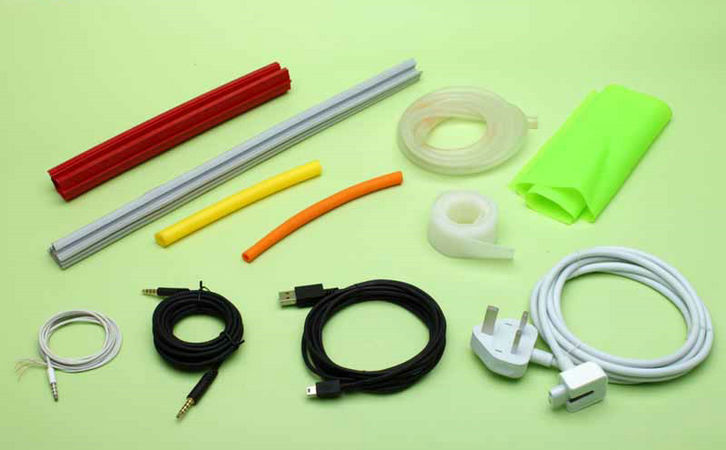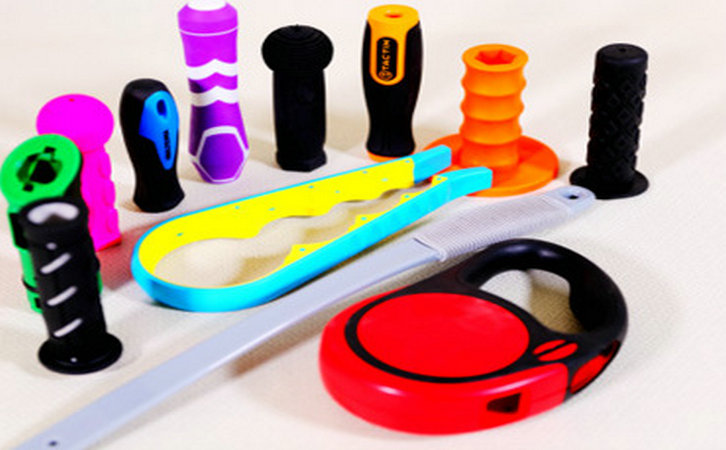Thermoplastic Elastomer (TPE) injection-molded products are everywhere—think soft-grip handles, phone cases, or even medical device components. They’re loved for their flexibility, durability, and that satisfying, rubbery feel. But there’s a common gripe that keeps popping up: why do some TPE products lack that shiny, polished look? As someone who’s spent years in the plastics industry, I’ve seen the disappointment on a client’s face when their sleek design comes out of the mold looking dull, like a foggy window on a rainy day. It’s frustrating, especially when gloss is key to a product’s appeal. This article dives into the reasons behind the lackluster finish of TPE injection-molded parts, offering practical solutions to bring back that eye-catching sheen. We’ll explore the science, share real-world insights, and provide tips to make your TPE products shine—literally.

Understanding the User’s Concern
When someone searches “why do TPE injection-molded products lack gloss,” they’re likely dealing with a product that falls short of expectations. Maybe it’s a manufacturer staring at a batch of matte-finished grips that were supposed to dazzle, or a designer wondering why their prototype looks lackluster. The user wants to know what’s causing this dullness and, more importantly, how to fix it. Is it a material issue? A processing flaw? Or something else entirely? My goal is to unravel this mystery in a way that’s clear, relatable, and actionable, blending technical expertise with practical advice.
The Science Behind TPE’s Lack of Gloss
TPE is a unique material, blending the elasticity of rubber with the processability of plastic. It’s like a gymnast—flexible yet strong—but achieving a glossy finish with TPE can be tricky. Gloss is all about how light reflects off a surface, and for injection-molded TPE, several factors can scatter that light, leaving the surface looking matte or hazy. Let’s break down the main reasons this happens.
1. Material Composition and Surface Texture
The chemical makeup of TPE plays a big role in its gloss potential. TPEs, especially styrene-based ones like SEBS (styrene-ethylene-butylene-styrene) or SBS (styrene-butadiene-styrene), often contain fillers, oils, or additives to enhance flexibility or cost-efficiency. These additives can create a micro-rough surface, scattering light instead of reflecting it cleanly. Think of it like a polished mirror versus a frosted glass pane—the rougher the surface, the less it shines.
I once worked with a client producing TPE phone cases. They wanted a glossy finish to rival high-end silicone, but their chosen TPE grade was loaded with fillers to cut costs. The result? A matte surface that looked more like sandpaper than glass. Switching to a higher-clarity TPE grade made all the difference.
2. Mold Surface Finish
The mold itself is a major player in gloss. Injection molds with a rough or unpolished surface transfer that texture to the TPE part, dulling its appearance. A mold that’s not polished to a mirror-like finish is like trying to paint a masterpiece on a bumpy canvas—the results just won’t shine. Even a high-quality TPE can’t overcome a poorly finished mold.
3. Processing Parameters
Injection molding is a delicate dance of temperature, pressure, and timing. If the processing conditions aren’t optimized, the TPE surface can suffer. For example, low mold temperatures can cause incomplete flow, leading to a hazy or matte finish. High injection speeds might trap air bubbles, creating tiny imperfections that scatter light. It’s like baking a cake—too hot or too cold, and the texture goes wrong.
I recall a factory visit where a team struggled with dull TPE grips. After hours of tweaking, we found the mold temperature was set too low, causing the TPE to solidify before forming a smooth surface. A quick adjustment, and the parts gleamed like they’d been dipped in polish.

4. Cooling Rate and Shrinkage
The cooling process after injection molding is critical. If TPE cools too quickly or unevenly, it can develop micro-cracks or uneven shrinkage, which dulls the surface. Imagine pouring hot syrup onto a cold plate—it hardens unevenly, losing its glossy sheen. Proper cooling ensures the material sets smoothly, maximizing light reflection.
5. Environmental and Post-Processing Factors
Even after molding, TPE can lose gloss due to environmental exposure or post-processing. Handling, cleaning with abrasive agents, or exposure to UV light can roughen the surface over time. It’s like a shiny new car—without care, it loses its luster. Secondary processes like texturing or sanding can also intentionally matte the finish, which might not align with the desired glossy look.
Solutions to Achieve a Glossy TPE Finish
Now that we’ve pinpointed why TPE products can look dull, let’s talk solutions. Achieving a glossy finish isn’t just about aesthetics—it’s about delivering a product that feels premium and stands out. Below, I’ve outlined practical strategies to make your TPE parts shine, complete with a table summarizing key approaches.
1. Choose High-Clarity TPE Grades
Not all TPEs are created equal. Opt for high-clarity TPE grades with minimal fillers or oils, as these are designed for optical clarity and gloss. SEBS-based TPEs with low additive content are a great choice. Think of it like choosing a crystal-clear glass over a frosted one for a fancy drink—it’s all about the presentation.
2. Polish the Mold Surface
A mirror-polished mold is non-negotiable for gloss. Use molds with a high SPI (Society of the Plastics Industry) finish, like A1 or A2, to ensure a smooth, reflective surface. Regular mold maintenance is key—any scratches or wear will show up on the part. I’ve seen manufacturers transform their products just by investing in a professional mold polish.
3. Optimize Injection Molding Parameters
Fine-tuning the molding process is like tuning a guitar—you need the right balance. Increase mold and melt temperatures within the TPE’s recommended range to improve flow and surface smoothness. Adjust injection speed to avoid air entrapment, and ensure proper pressure to fill the mold completely. Experimentation is key, but start with the manufacturer’s guidelines.
4. Control Cooling Rates
A controlled cooling process helps TPE solidify evenly, preserving gloss. Use a mold with proper cooling channels to avoid hot spots, and set cooling times to allow the material to settle smoothly. It’s like letting a cake cool slowly to avoid cracks—patience pays off.

5. Minimize Post-Processing Damage
Protect the TPE surface after molding. Avoid abrasive cleaning agents or rough handling during assembly. If secondary processing is needed, consider protective coatings or films to maintain gloss. For consumer products, advise end-users to clean with mild soaps to preserve the finish.
6. Add Gloss-Enhancing Additives
Some TPE formulations can include gloss-enhancing additives, like specific resins or surface modifiers, to boost reflectivity. These act like a topcoat of nail polish, giving the material an extra shine. Work with your TPE supplier to explore these options, but test thoroughly to ensure compatibility.
|
Solution |
Description |
Best For |
Effectiveness |
|---|---|---|---|
|
High-Clarity TPE Grades |
Use TPEs with low fillers and high optical clarity for better gloss. |
Transparent or glossy products |
High |
|
Mirror-Polished Mold |
Polish mold to SPI A1/A2 finish for a smooth, reflective surface. |
All glossy TPE applications |
High |
|
Optimized Molding Parameters |
Adjust temperature, pressure, and speed for smooth surface formation. |
Manufacturing stage |
Moderate to High |
|
Controlled Cooling |
Ensure even cooling to prevent micro-cracks or uneven shrinkage. |
Injection molding process |
Moderate |
Real-World Applications and Insights
Let’s bring this to life with some real-world examples. In the consumer electronics industry, glossy TPE phone cases are a hot commodity. A client I worked with struggled with matte finishes on their cases, which looked cheap despite the premium price tag. By switching to a high-clarity SEBS grade and polishing their molds to a mirror finish, they achieved a glossy look that screamed luxury.
In the automotive sector, TPE is used for interior components like dashboard grips. A dull finish here can make a car feel less refined. One manufacturer I advised tackled this by optimizing their injection molding parameters, specifically increasing mold temperature and slowing the cooling rate. The result? Grips that gleamed under showroom lights, impressing buyers.
For medical devices, gloss isn’t just about looks—it signals cleanliness and quality. A medical supplier once contacted me about dull TPE tubing. We traced the issue to a rough mold surface and abrasive cleaning during assembly. A quick mold polish and a switch to gentler cleaning methods restored the glossy finish, boosting customer confidence.
Emotional Impact and Why It Matters
There’s something magical about a glossy finish—it catches the eye, feels premium, and screams quality. When a TPE product lacks gloss, it’s like a diamond that’s lost its sparkle. For manufacturers, a dull finish can hurt brand perception and sales. For consumers, it’s a letdown when a sleek gadget or tool doesn’t live up to its promise. Achieving that glossy sheen isn’t just technical—it’s about delivering joy and confidence in a product.

Practical Tips for Manufacturers and Consumers
For manufacturers, start with material selection. Work closely with your TPE supplier to choose a grade optimized for gloss. Invest in high-quality molds and maintain them religiously—think of it as caring for a prized instrument. During production, don’t rush the process; take time to fine-tune molding parameters and cooling rates. And always test prototypes under real-world conditions to catch issues early.
For consumers, look for products labeled as high-gloss or premium-grade TPE. If you’re buying phone cases or grips, check reviews for mentions of finish quality. To maintain gloss, clean with mild soaps and avoid abrasive scrubbers. Store products away from direct sunlight or harsh chemicals to keep them looking fresh.
Looking Ahead: Innovations in TPE Gloss
The TPE industry is evolving fast, and gloss is a hot focus. Researchers are developing advanced TPE formulations with built-in gloss-enhancing properties, like nano-resins that improve surface smoothness. New molding technologies, such as gas-assisted injection, are also helping create glossier finishes with fewer defects. I’m excited to see where this goes—imagine TPE products that shine like glass without extra effort!

Related Questions and Answers
To wrap up, here are some common questions about TPE gloss, answered in a way that’s clear and engaging:
Q: Can I restore gloss to a dull TPE product?
A: It’s tough to restore gloss once it’s gone, as surface roughness is often permanent. However, you can try applying a clear, gloss-enhancing coating or polish designed for plastics. It’s like buffing a scratched car—results vary, but it’s worth a shot.
Q: Are glossy TPE products more expensive?
A: Sometimes. High-clarity TPE grades and polished molds cost more, but the investment pays off in premium appeal. It’s like buying a designer bag—quality comes at a price.
Q: Does gloss affect TPE’s durability?
A: Not directly. Gloss is about surface finish, not structural strength. However, a well-processed glossy TPE part often indicates careful manufacturing, which can mean better overall quality.
Q: Can I make a matte TPE product glossy later?
A: It’s challenging. You’d need to polish the surface or apply a glossy coating, but results may not match a properly molded glossy part. It’s like trying to polish a pebble into a gemstone—better to start with the right material.
Q: Are there eco-friendly glossy TPE options?
A: Yes! Some suppliers offer bio-based TPEs with high-gloss potential. Pair these with sustainable mold polishes and you’re on your way to an eco-friendly shine.





